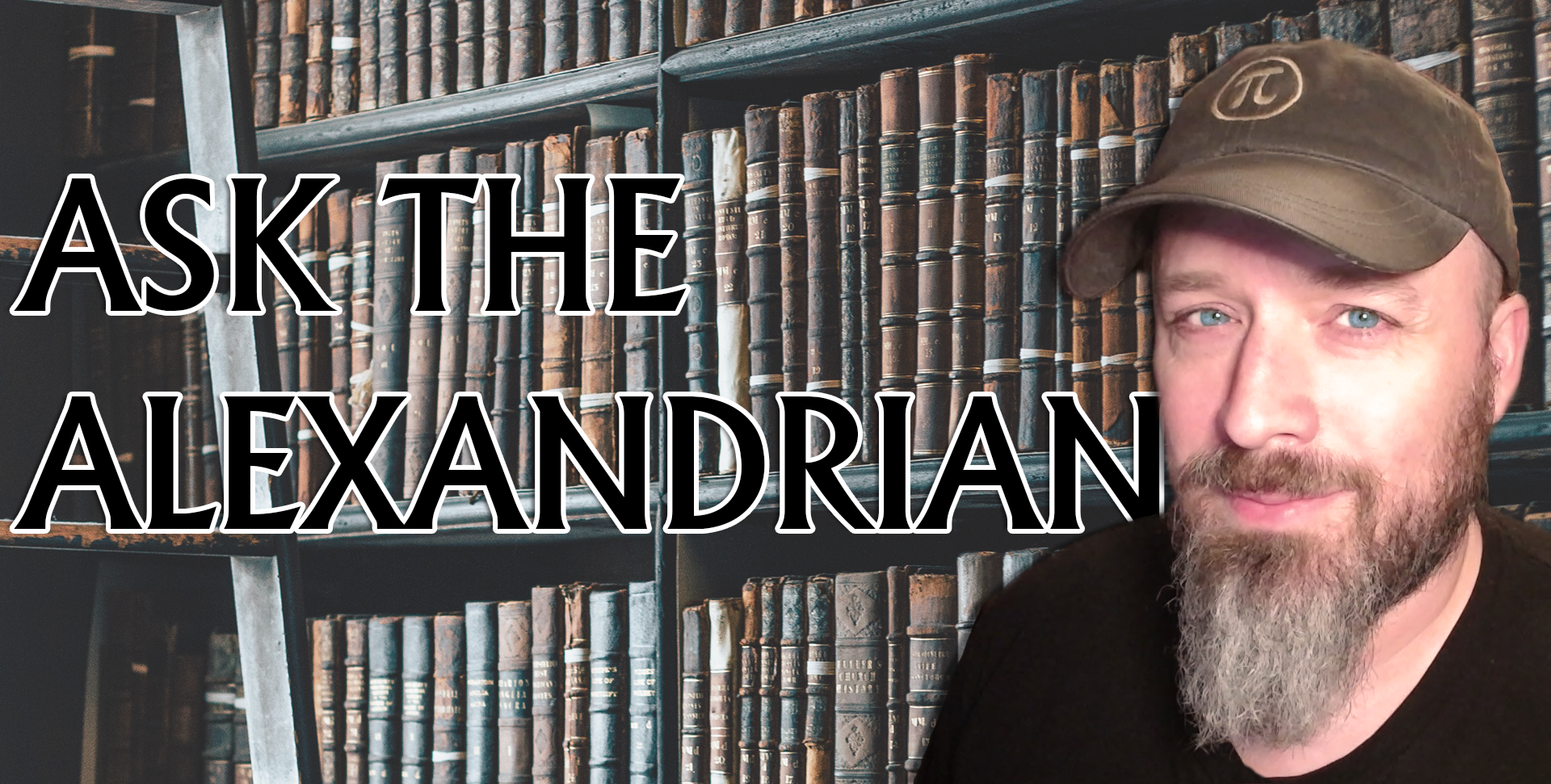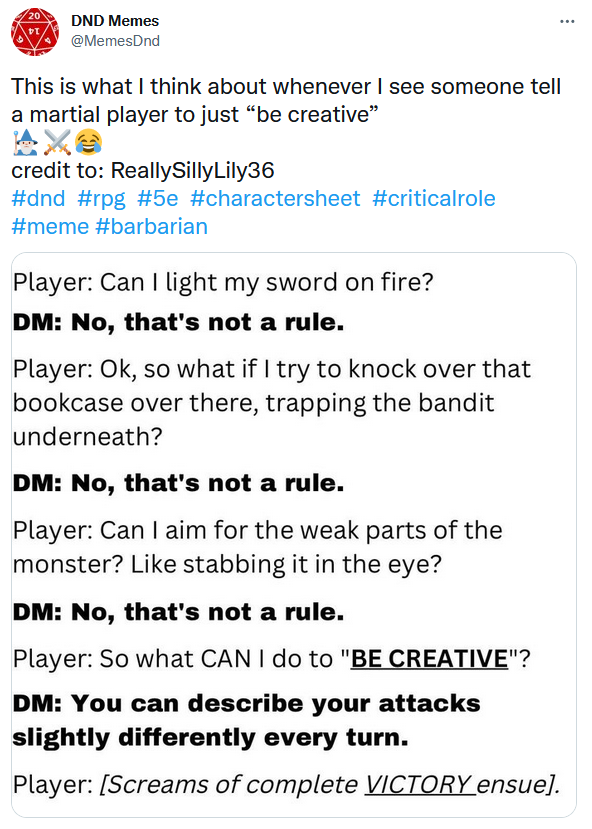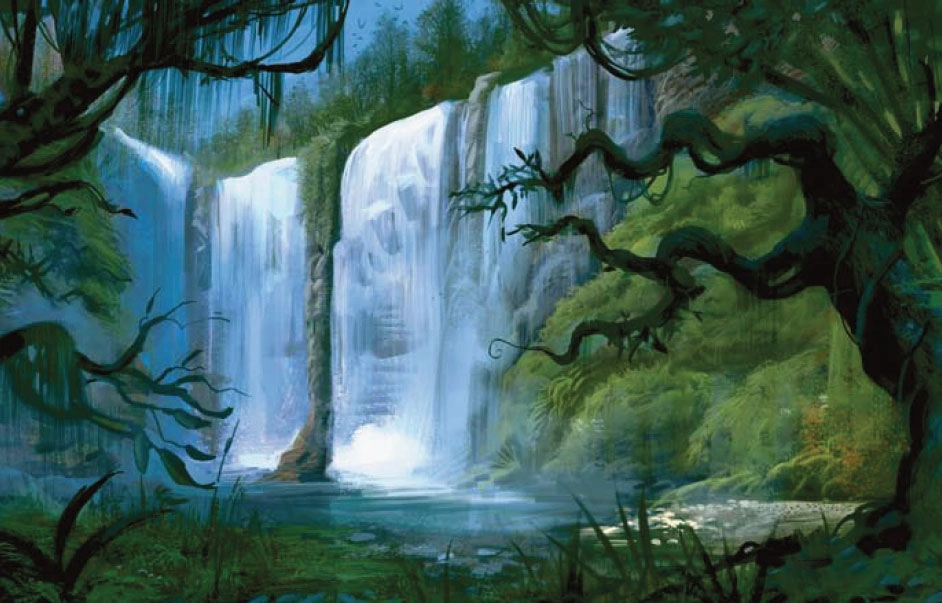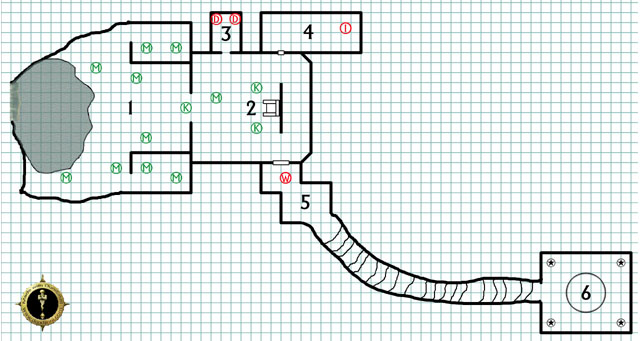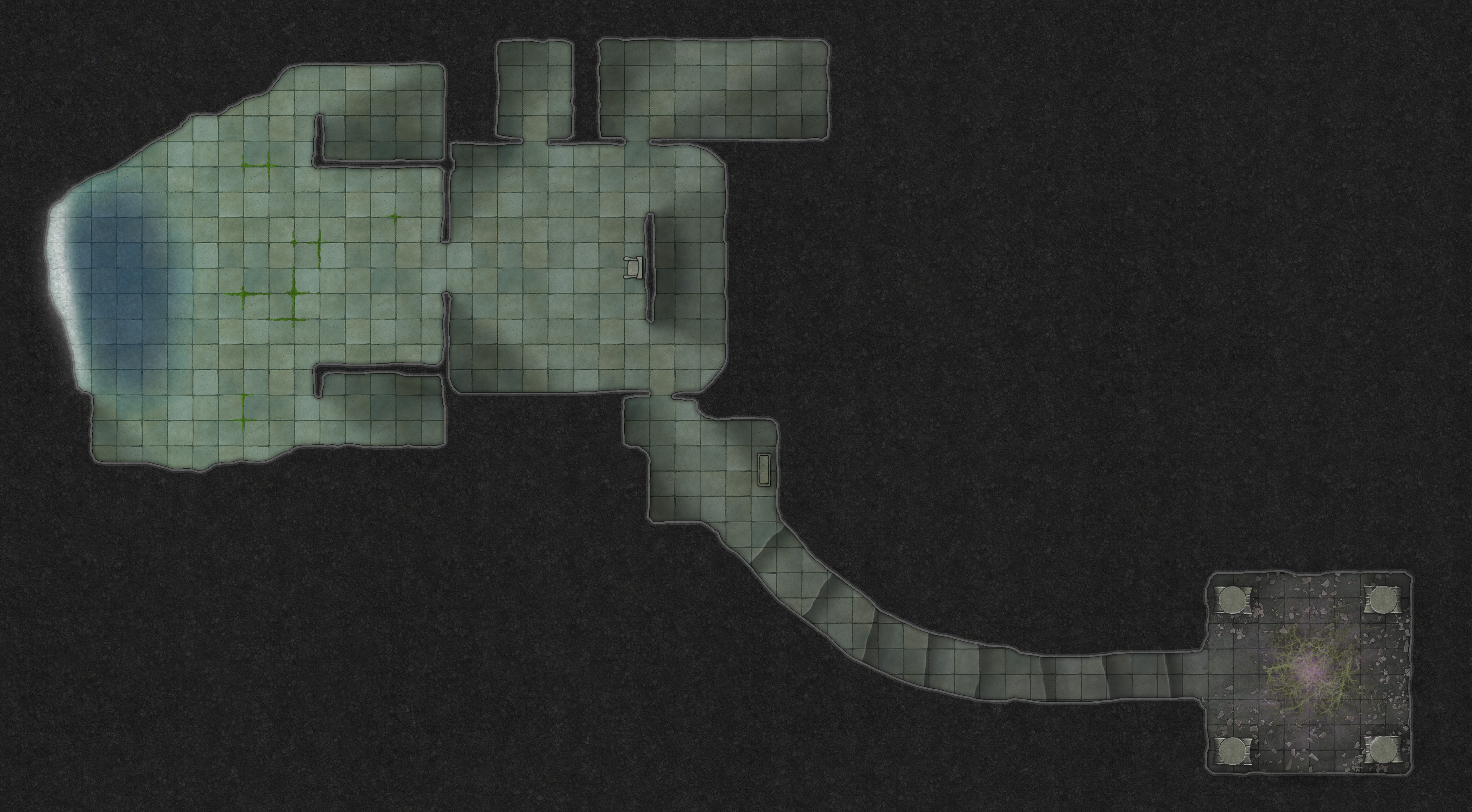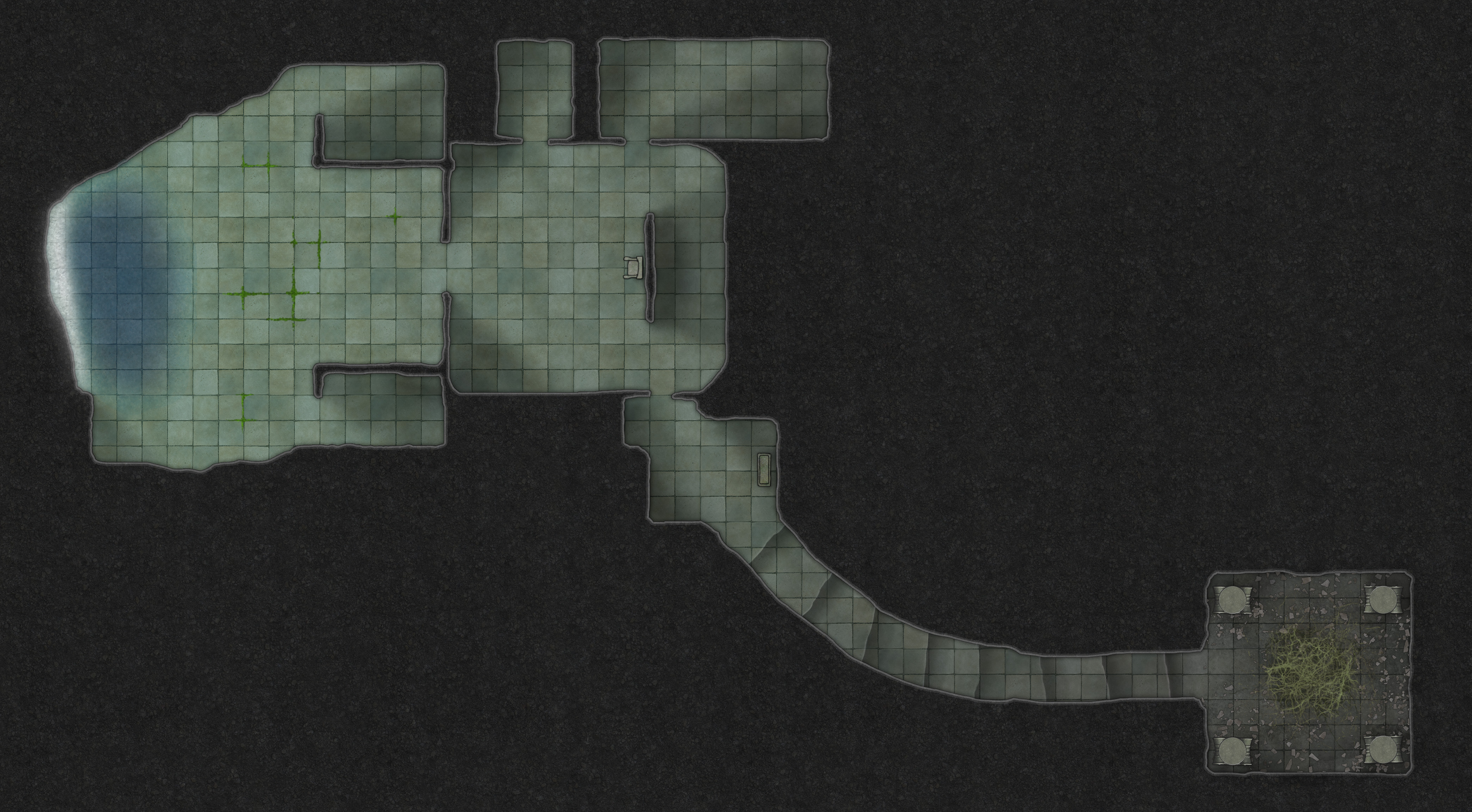REBOOTING 3rd EDITION
As a result of the Open Gaming License (OGL), D&D was sitting at the top of, and benefiting from, a huge pyramid of support material. Wizards wanted to shut that down, but there was no way to do that because the license couldn’t be revoked.
What Wizards COULD do, though, was reboot the game. And that’s exactly what they did in 2003, releasing the revised 3.5 Edition of D&D.
The way in which they did this was significant. Before 3.5 was released, Wizards made a big deal in all of its marketing about how the game was going to be “backwards compatible.” It wasn’t going to make your existing 3.0 books obsolete, and players should have no qualms about continuing buy 3.0 books because they would still work with the new 3.5 rulebooks.
But when 3.5 was actually released, a switch was flipped in the marketing: The 3.0 books were now worthless. Those black-and-white softcovers we were selling? Get rid of ‘em. Time to buy the new full color hardcover splatbooks! The evergreen strategy was out, and the splatbook strategy was back, with Wizards using the 3.5 reboot to upgrade their splatbooks so that they could compete with the high quality third-party supplements.
But it wasn’t just the customers who had been caught flatfooted by this abrupt one-eighty in marketing. OGL publishers had taken Wizards at their word, and continued developing, writing, playtesting, and printing 3.0 supplements they had been told would be completely compatible with the new rulebooks, but which their customers were now being told were worthless.
And it wasn’t just the publishers. It was the local game stores, too, who had continued investing their capital in merchandise they thought they could sell, but which Wizards was now telling their customers should be left to rot on the shelves.
Hundreds of games stores went out of business. Dozens of publishers followed. The “D20 bubble” had burst, having been either accidentally — or, according to some — deliberately popped by Wizards.
But 3.5 was, in fact, pretty similar to 3.0. Even if WotC hadn’t released an updated SRD for the 3.5 rules, third-party publishers would have been able to continue producing compatible books using the existing OGL. For now, at least, Wizards decided it made more sense to stay on top of the pyramid.
That would change, however, five years later with the release of 4th Edition.
LET’S KILL THE OGL
The story of the release and many, many failures of 4th Edition is a saga in its own right, so I’m going to try to keep it as simple as possible and also stay focused on the OGL.
The short version is around 2005, Hasbro decided to split its brands into core brands, which had more than $50 million in annual sales, and non-core brands, which didn’t. Core brands would get investments in development, marketing, and licensing. Non-core brands would not, and in fact many of them would be mothballed, allowed to lie dormant for years before being potentially brought back for a fresh start.
D&D was not a $50 million brand. It was a $30 million brand.
So the D&D team had a big problem: At best, most of them were about to lose their jobs. At worst, D&D was once again on the corporate chopping block.
So they came up with a big plan for saving D&D by growing its annual revenues. This included a virtual tabletop, digital DLC, increased miniature and merch sales, and a subscription platform to get regular, monthly income from their fans just like an MMO. They also believed that they needed to kill all outside licensing, including the OGL, so that they could claw as much of that revenue back as they could.
But, of course, the OGL could not be revoked.
Do I know for an absolute fact that the design team of 4th Edition D&D was given a corporate directive to design a game that required the use of either miniatures or a virtual tabletop, both of which Wizards would sell; strongly encourage the use the of a digital character creation subscription service; and so fundamentally alter the core gameplay of D&D that the OGL could no longer be used to create compatible supplements?
I don’t.
So you can make up your own mind about that.
What we do know is that Hasbro killed the OGL for 4th Edition. And we also know that Wizards didn’t really want to publicly admit that, so they spent a lot of time before 4th Edition came out hemming and hawing. They talked a lot about their commitment to open gaming and assured people that a license for “third-party and fan creations” would definitely be made available for 4th Edition.
There was a lot of back-and-forth here, and the timeline is made a lot muddier because there were both public announcements being made and private meetings with third-party publishers shielded with NDAs. There are a few key milestones that are probably worth establishing, though.
First, Wizards eventually admitted that 4th Edition would not use the OGL. Instead, they were creating a new Gaming System License, or GSL. But the details of this new license still weren’t being made public.
Wizards then announced that people could pay them $5,000 in order to get early access to the 4th Edition SRD and GSL, but still didn’t tell anyone what the terms of the GSL were. This went over like a lead balloon and the program was cancelled.
When the GSL was finally released, it contained a poisoned pill: If you used the GSL, you could not publish anything in the same product line using the OGL.
It also contained a termination clause, just like the one used in the D20 System Trademark License: Hasbro could unilaterally cancel the GSL at any time, at which point you would need to immediately de-list your books and pulp your inventory.
After more public outcry and pressure, they eventually dropped the poisoned pill. But the termination clause stuck. That was, after all, more or less the whole point of the exercise.
(Ironically, as far as I know, that termination clause has never been activated.)
THE RISE OF PATHFINDER
At this point, Wizards had a few problems.
First, their GSL shenanigans were just one of several ways in which they’d alienated large chunks of their fanbase.
Second, even though they’d willfully abandoned their position on top of the vast pyramid of 3rd Edition support material, that pyramid was still there. And people were still free to create more of it.
Third, they’d pushed a company called Paizo Publishing into a desperate situation.
When Wizards decided they didn’t want to keep publishing Dragon and Dungeon Magazine in 2002, they licensed those magazines to Paizo, a company which had been founded by former Wizards executives to specifically do that.
In preparation for 4th Edition, Wizards announced that Paizo’s license would not be renewed and, in fact, that Dragon and Dungeon would no longer be published as physical magazines at all. Paizo, of course, still had the subscription lists, so they started publishing the Pathfinder Adventure Path as a new monthly periodical for their customers.
Paizo’s intention was to transition the Pathfinder Adventure Path to 4th Edition when the new game came out, but Wizards’ lengthy delays in making the GSL available put Paizo in a bind, which only became worse when it became clear that, whatever the Top Secret terms of the new license were going to be, they certainly weren’t going to be particularly friendly.
The result was the Pathfinder Roleplaying Game. Published by Paizo, it was essentially a “3.75” edition of D&D that, because of the subscription lists, could be marketed directly to the most hardcore of D&D’s fans by a company that had already spent years selling them premiere adventures and support material. It also became a banner for all those disaffected by Wizards’ actions, the gameplay of 4th Edition, or both.
Wizards had completely blown their dismount from the OGL and managed to create their single largest competitor. Furthermore, Pathfinder made it certain that the OGL — and the wealth of third-party support made possible by the OGL — would continue through the long winter of 4th Edition.
THE RETURN OF THE OGL
Let’s fast forward now to 2015.
Whatever your personal opinion of 4th Edition as a game, there’s little question that it was a failure for Wizards of the Coast. They attempted to relaunch the game in late 2011, and then cancelled it entirely in 2012. The leadership responsible for 4th Edition was fired and development began on what would eventually become 5th Edition, which was released in the fall of 2014.
A lot of the marketing around 5th Edition took the form of mea culpas. As we’ve noted, Wizards had burnt a lot of bridges in 2008, and they were now working overtime to repair them. For example, whereas 4th Edition had seen them cancel all their third-party licenses, they would now reach out to third-party companies to develop their first official campaigns for the new edition.
In the spirit of bridge-building, they similarly announced, in May 2014, that 5th Edition would be returning to the OGL. Unlike in 2000, this wouldn’t happen on the day of the game’s release in September 2014, but would instead follow in the spring of 2015.
There would also be no trademark license this time, but the approach to the OGL itself would be similar: An SRD would be released under the license, containing all of the open game content required to make 5th Edition-compatible adventures and supplements.
Behind the scenes, this détente had actually required a titanic struggle with Hasbro’s lawyers. The compromise that was made was that nothing would be included in the 5th Edition SRD unless it had already been included in the 3rd Edition SRD.
So, for example, the magic missile spell had appeared in 3rd Edition, so it’s also in the 5th Edition SRD. Arcane gate, on the other hand, wasn’t a spell in 3rd Edition, so it doesn’t appear in the 5th Edition SRD.
This also means that the 5th Edition SRD contains enough material to allow for the creation of 5th Edition-compatible supplements, but not so much that something like the Pathfinder Roleplaying Game could be easily created by another company.
MEANWHILE, IN THE GUILD…
In terms of community content, however, the SRD and the OGL aren’t the whole story for 5th Edition. There’s also the Dungeon Masters Guild.
To understand the origins of the DMs Guild, we need to go back in time to the early days of 3rd Edition. During this time, a company called RPGNow had signed an agreement with Wizards of the Coast to sell D&D PDFs. This included PDF versions of older books, too, going all the way back to the original 1974 game.
RPGnow would eventually merge with DriveThruRPG to form a company called OneBookShelf, which continued selling the D&D PDFs.
When Wizards started yanking all their external licenses with the release of 4th Edition, however, this included OneBookShelf’s license. This was, rather infamously, done without any prior announcement and included preventing people who had previously purchased the books from downloading them. (Remember what I said about alienating large chunks of their fanbase?)
In 2012, with leadership changing in the wake of 4th Edition’s failure and the corporate strategy switching from No One Shall Play With Our Toys to Y’All Come Back Now, Ya Hear?, OneBookShelf was able to negotiate a new license, launching D&D Classics in 2013 to once again offer PDFs from all previous editions of D&D.
In 2016, D&D Classics was rebranded the Dungeon Masters Guild, and a community content program was launched: Independent creators could now create and sell content based not only on the SRD, but on all official D&D 5th Edition books. This included the Forgotten Realms, and has since expanded to include other official settings including Ravenloft, Eberron, Ravnica, Theros, and Dragonlance.
The license for the Dungeon Masters Guild has nothing to do with the OGL, and those using this license can ONLY sell their books through the Dungeon Masters Guild website. Furthermore, if you publish a book through the DMs Guild, you are prohibited from publishing any derivative work.
So, for example, you could not publish a book through the DMs Guild, then remove all the D&D-related material and publish it using a different set of rules. Nor could you publish a novel or comic book based on your DMs Guild book.
Finally, unlike the OGL, the DMs Guild license can once again be unilaterally terminated by Hasbro. This does not, crucially, end the exclusivity agreement, so you would still be unable to remove the D&D IP and publish your work somewhere else.
This means that there will come a day when Hasbro decides to shut down the DMs Guild and everything on the site will simply… vanish. Forever.
You’ll hear some people say that this would never happen, because Hasbro would never want to deal with the huge public backlash that would follow. But, as we’ve seen, this isn’t really a hypothetical: Hasbro HAS cancelled licenses just like this one. It’s not a question of if they’ll do it again, just when.
Does this mean that no one should publish on the DMs Guild? Not necessarily. Being able to commercially access the entire lore of D&D’s official campaign settings and produce tie-ins and support products for their most recent adventure modules is an incredibly unique and creatively special privilege.
But unless you’re doing that, you may want to take that whole “some day you’ll never be able to show anyone your work ever again” thing into consideration.
Regardless, with the OGL and the DMs Guild, 5th Edition ushered in a second golden age of third-party content for D&D. As with the OGL and D20 System Trademark License for 3rd Edition, you can argue about exactly how much this openness has contributed to the success of the game, but there’s no question that the game has succeeded brilliantly, with 5th Edition exceeding all expectations and finally achieving the lofty revenue goals that 4th Edition tried so desperately to grasp.
THE NEXT CHAPTER
Now, in the waning days of 2022, preparations are being made for D&D’s next chapter. A new edition of the game, currently referred to as OneD&D, has entered public playtesting and is scheduled for release in 2024 during the game’s 50th anniversary.
A few days ago, Wizards of the Coast announced that OneD&D, like 4th Edition before it, would NOT be using the OGL. Instead, a new version of the license – currently referred to as the OGL v1.1 – will be used. We don’t know a lot about this license, but we do know that:
- Those using the license will need to file their documents with Hasbro.
- Those using the license who have at least $50,000 in OGL-related revenue will need to start reporting their income to Hasbro.
- Those who have $750,000 in revenue or more will need to start paying a royalty to Hasbro.
- There are other changes in the terms of the license which have not yet been announced.
Any or all of this, of course, might still change. And what the final form of this 1.1 license will be is something we can really only speculate about. Will it have one or more poison pills? Will it give Hasbro the right to make unilateral changes to the license or otherwise be revocable?
As we look back over the history of the Open Gaming License, it seems as if we’re in a period of time quite similar to 2008: New leadership has taken control of Wizards. They have a new edition coming out. Corporate leadership is calling for increased monetization of the D&D property. After hemming and hawing, Wizards has been forced to make a public statement about the future of the Open Gaming License.
And what we know for certain right now is that their intention is for OneD&D to be less open than 5th Edition.
How MUCH less open it will be is the unanswered question.
FURTHER READING
Do I Need to Use the OGL?



